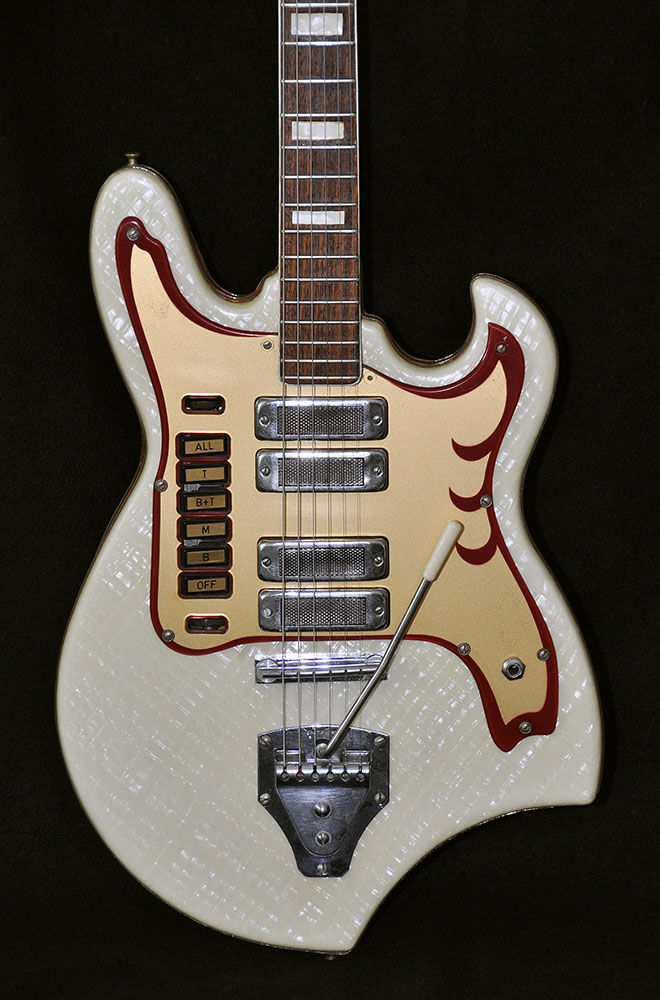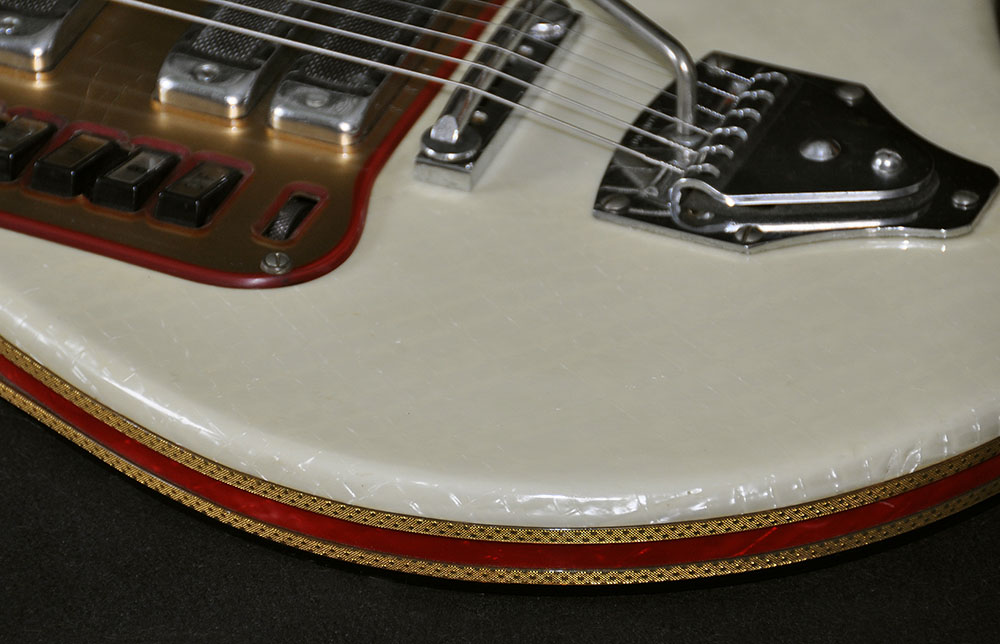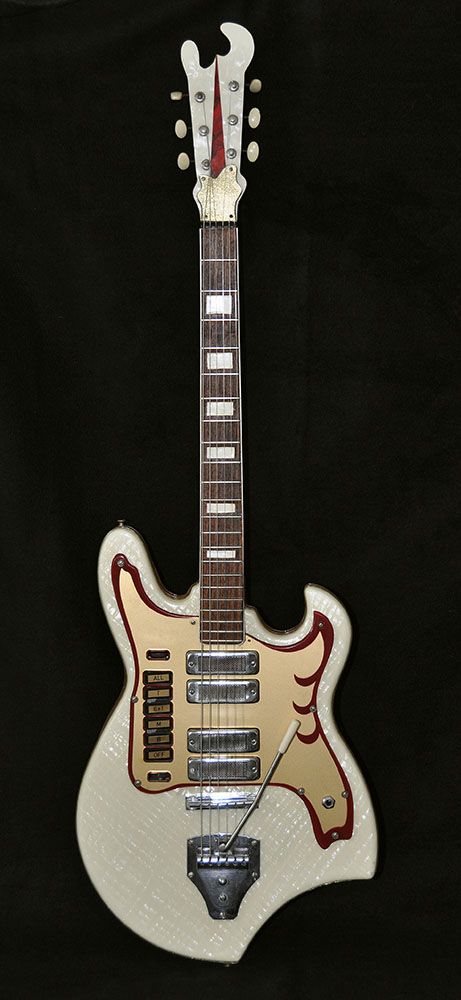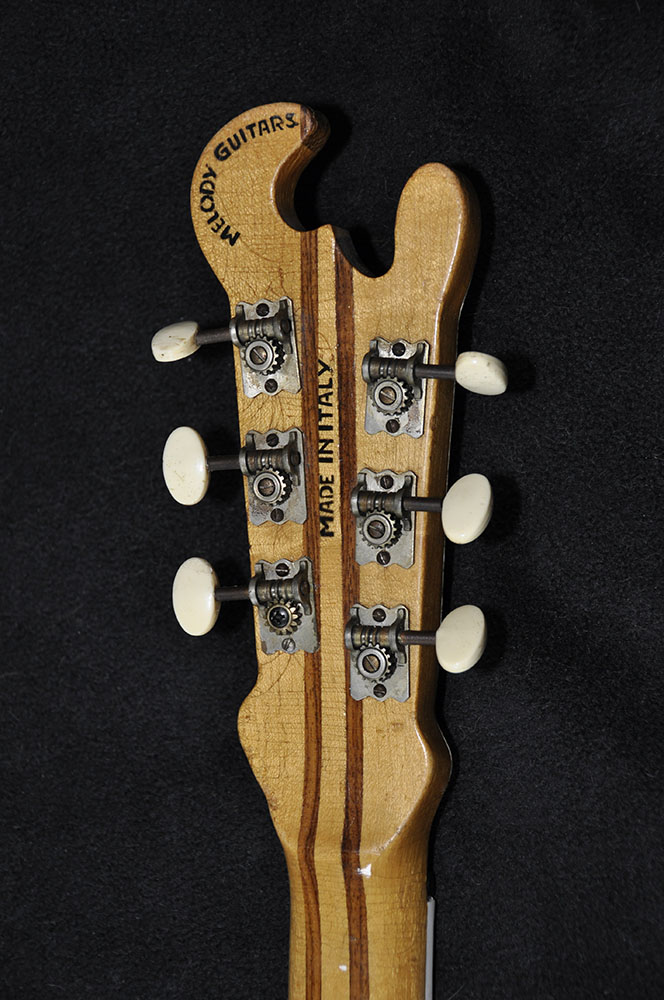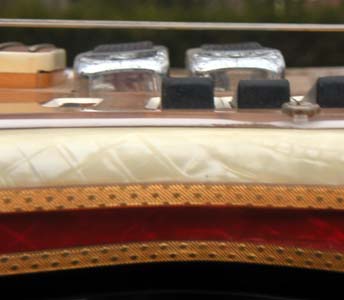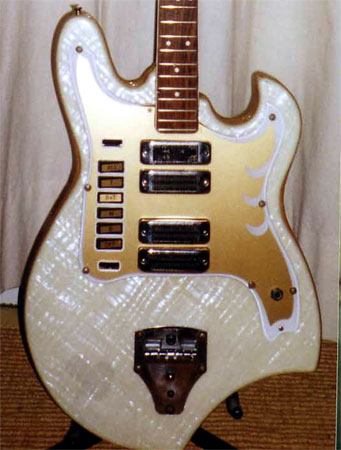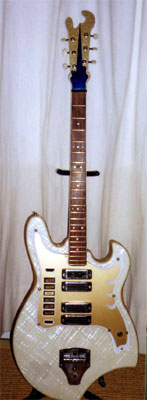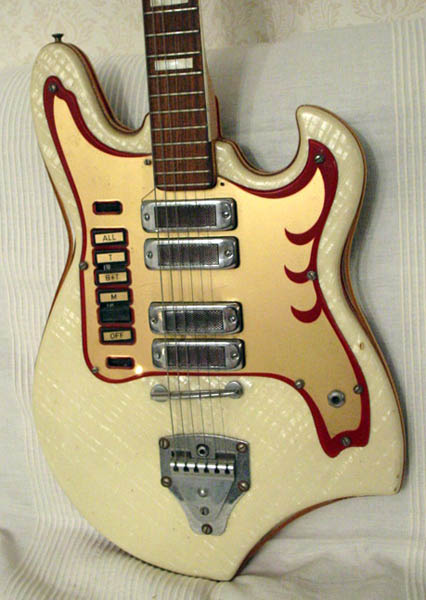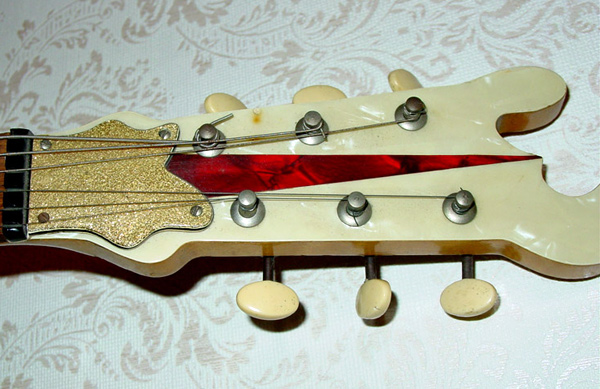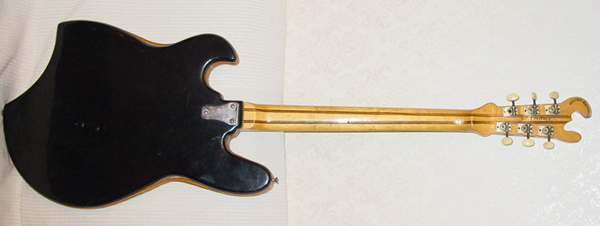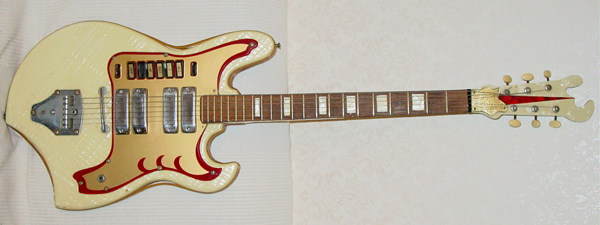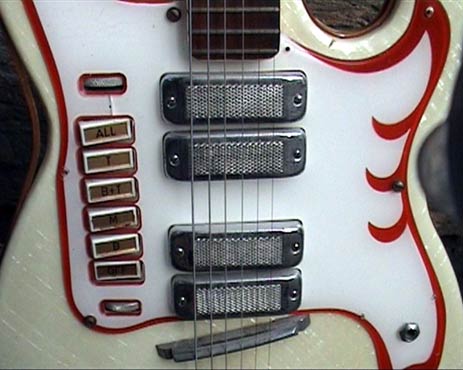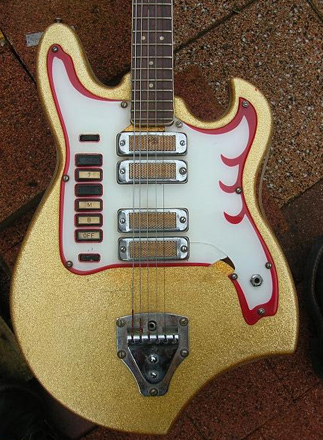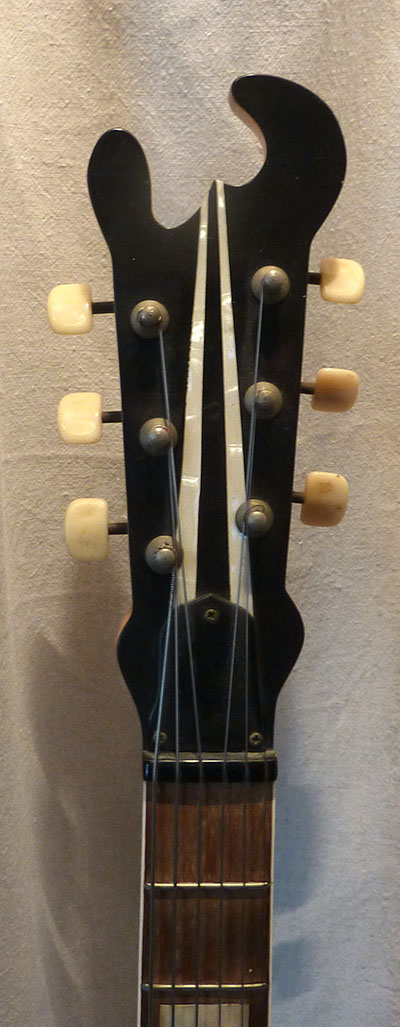MELODY triple cutaway Floating Non-Adjustable Bridge
The first generation is defined by the neck construction, made of five converging pieces of maple/rosewood (or oak?), and the very special headstock. The non-adjustable floating bridge, similar to the one fitted on the oldest Bartolinis and Welsons, distinguishes the earliest examples.
As for all Bartolini, Gemelli, Crucianelli, Welson etc. guitars from those years, electronics were sourced from Nando Marchetti, Castelfidardo, and the vibrato was the well known generic device made by the Gama company, also in Castelfidardo. But for the tuners Melody generally preferred Van Ghents (like Eko).
Unlike all other makes from the Castelfidardo-Recanati district, Melody solidbodies never were fitted with a glued-in neck, they had from the beginning a bolt-on neck, with the distinctive T-shaped three-screw neck plate. Did Melody apply this solution even before Eko did? This cannot be ruled out. The company was quite advanced. And didn’t use a zero fret.
La prima generazione è caratterizzata dalla costruzione del manico a cinque sezioni convergenti in acero + palissandro (o quercia?), e le inconfondibili palette. Il ponte non regolabile, simile a quello usato per le più vecchie Welson e Bartolini, contraddistingue i primissimi esemplari.
Come per tutte le prime Bartolini, Gemelli, Crucianelli, Welson ecc., l’elettronica era fornita dalla ditta Nando Marchetti di Castelfidardo, e il vibrato era il modello generico fatto dalla Gama, anch’essa di Castelfidardo. Ma per le chiavette Melody preferiva generalmente le Van Ghent (come Eko).
Contrariamente a tutti gli altri marchi della zona di Castelfidardo-Recanati, le solidbody Melody non hanno mai avuto il manico incollato. Sin dall’inizio fu avvitato, attraverso la caratteristica piastra a forma di T con 3 viti. Potrebbe darsi che Melody precedette anche Eko con questa soluzione? Non è da escludere. L’azienda era proprio avanzata. E non metteva un tasto zero.
www.guitarage.nl




